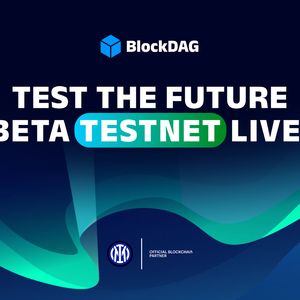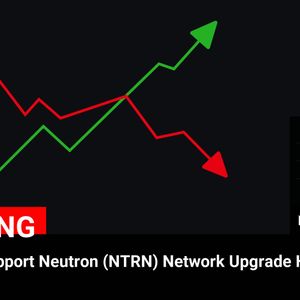The tools available on a blockchain do more than assist users—they shape what users are truly capable of. While Cronos and Ethereum Classic have earned solid reputations through steady progress and loyal communities, they often leave users to navigate systems on their own. Cronos has widened its use cases but is still recovering from a notable price slide. Ethereum Classic sticks to a stable system but doesn’t provide much support for active user engagement. What sets BlockDAG (BDAG) apart is its strong focus on usability. Participants in its testnet get access to a full set of tools and real-time guidance, placing user needs at the center of the experience rather than making them secondary. Cronos (CRO): Expansion Steps and User Returns Cronos (CRO) powers the Cronos blockchain, developed by Crypto.com. It began as a tool for handling transactions within the Crypto.com platform and has grown to become the gas fee token for Cronos EVM and zkEVM chains. CRO now supports DeFi services, NFT functions, and gaming apps, positioning it as a key asset within the expanding ecosystem. A key move occurred in March 2025, when the Cronos community voted to release 70 billion CRO over the next decade to fuel ecosystem growth. This includes work on a CRO-backed ETF designed to draw interest from major financial institutions. Alongside that, a proposal to burn 50 million CRO from reserves was made to reduce supply and potentially raise demand. These actions reflect a long-term goal of maintaining growth and increasing value. On March 30, 2025, CRO was priced at around $0.099. Compared to 2024 highs, this reflects a drop of nearly 50%, largely in line with wider corrections in the market. Still, outlooks from analysts remain mildly positive. Depending on how adoption progresses, projections suggest CRO could climb to between $0.124958 and $0.337643 by the end of 2025. Ethereum Classic (ETC): Steady Model with Market Resilience Ethereum Classic (ETC) came into being in 2016 after a split from Ethereum, following the principle of “code is law” to preserve blockchain integrity. It continues to rely on Proof-of-Work (PoW), allowing developers to create dApps on a secure platform. In terms of price action, ETC has held its ground. As of March 30, 2025, it trades at about $16.47. That marks a drop of roughly 50% from its 2024 peak, which mirrors the downturn seen across many cryptocurrencies. Forecasts for ETC in 2025 are mixed, with some suggesting a rise to between $50.28 and $60.03 if broader conditions improve. Its focus on consistency, along with generally lower transaction fees compared to Ethereum, appeals to those looking for a more stable option in the market. The fixed maximum supply of 210 million ETC also makes it an asset that could better resist inflation. Looking at both Cronos and Ethereum Classic, each has faced market shifts yet continued building with community support and clear plans. Though performance has been affected by larger trends, the long-term potential of both projects depends heavily on future adoption and market stability. BlockDAG Gives Testnet Users Full Access to Tools and Support BlockDAG’s Beta Testnet, named “Primordial,” is carefully designed for ease of use. It provides users and developers with a full set of tools to explore features, manage wallets, run smart contracts, and interact confidently with the system. Key resources include a Block Explorer to track live transactions, a user-friendly Wallet interface to check balances and vesting, and a no-code dApp Wizard for launching applications quickly. There’s also a built-in IDE for creating and deploying contracts, backed by detailed technical documentation. Whether someone is mining, building, or simply engaging with the platform, each process is clearly laid out and easy to follow. In addition to these tools, BlockDAG offers around-the-clock technical help through Freshdesk. This includes live agent support and the option to escalate technical concerns directly to developers. These services aim to lower entry barriers, encourage testing, and ensure users are not just part of the process—they’re in full control. The momentum from this tool-focused rollout is reflected in BlockDAG’s crypto presale . As of Batch 27, the project has raised $210.5 million, distributing over 19.1 billion coins at the current rate of $0.0248 per coin. Those who joined in Batch 1 have already seen gains of 2,380%, showing strong backing from the wider market. Yet this growth is not just based on numbers—it shows how people respond to systems that are easy to use, reliable, and scalable. With rewards for top testnet users, automated vesting features, and real BDAG earnings, BlockDAG continues to build a group of users focused on long-term goals. Final Remarks! Practical use isn’t only about transaction volume or total market value—it’s about how well a blockchain supports its users across every stage. While Cronos adds value through DeFi connections and Ethereum Classic stays true to immutability, both fall short in providing tools that bring users closer to the system. In contrast, BlockDAG hands over the tools and support people need to fully participate, create, and explore with confidence. It’s more than just building software—it’s about making sure people have what they need to take full part in the network. That core idea may be what shapes which projects truly last. Presale: https://purchase.blockdag.network Website: https://blockdag.network Telegram: https://t.me/blockDAGnetworkOfficial Discord: https://discord.gg/Q7BxghMVyu The post CRO Drops 50%, ETC Holds at $16.47— While BlockDAG’s Beta Testnet Launch Gives Users Full Control appeared first on TheCoinrise.com .
















